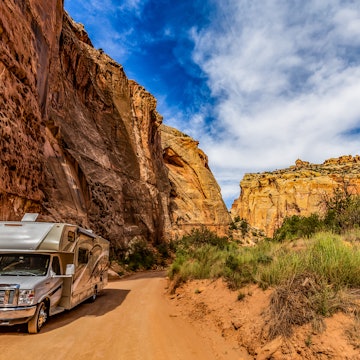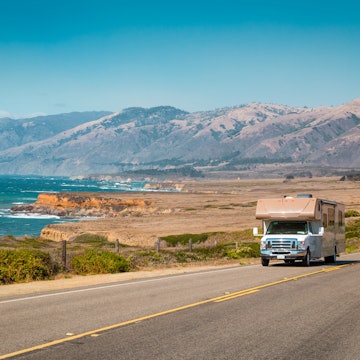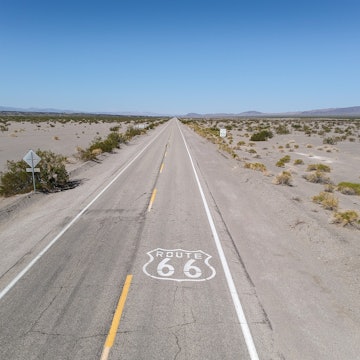

Here are seven neighborhoods where you can soak up Portland’s cool, alternative, quirky vibes. Shutterstock
The dynamic city of Portland, Oregon is wonderfully compact and quite easy to get around on foot or bicycle.
This means that it takes just a couple of days to take in the city’s best neighborhoods and get a sense of the city’s scope. If you want to go deeper, you might prefer homing in one or two districts that best match your interests.
For navigational purposes, it’s helpful to know that Portland is divided into quadrants (although, unhelpfully, there are six “quadrants,” not four). These are Northeast, Northwest, Southeast and Southwest, plus South and North, with the Willamette River and Burnside St serving as broad boundaries. Each of these divisions contains several distinct neighborhoods.
Locals are often fiercely loyal to their chosen quadrant – you might hear someone from Southeast claim they never cross the river, if they can help it. And while we don’t endorse such snobbery, it’s true that each neighborhood really does have its own vibe. Here are some of our favorites.

1. Hawthorne District
Best for food carts and local shops
One way to rank Portland neighborhoods is by the quality of their independent movie theaters. Hawthorne, in Southeast Portland, has two: the landmark Bagdad Theater and the impeccably programmed Cinemagic. This area is also home to an outpost of the iconic Powell’s Books.
Decades ago, Hawthorne was known for its crunchy, hippie vibe; exploring here meant walking through clouds of patchouli. These days, however, the main drag boasts numerous stylish, locally focused gift shops and a huge variety of places to eat and drink.
The district follows Hawthorne Blvd from east to west. At the west end toward the river, you’ll find Lardo, one of the best sandwich shops in town; the Hawthorne Asylum, one of the best collections (“pods”) of food carts; and access to the Eastbank Esplanade, a riverside walking and cycling path. At the east end of Hawthorne is Mt Tabor Park, an extinct volcano where you’ll find forested hiking trails and city views – plus the annual, quintessentially Portland PDX Adult Soapbox Derby. In between, within just a few blocks, you can get mochi donuts, craft beer and cider, a tattoo, a straight-razor shave, espresso, comic books, and some of the best pizza of your life (at Apizza Scholls). In other words, peak Stumptown.
2. Kerns
Best for unfussy yet excellent dining
We’re not the only ones who think Kerns is cool: it’s been winning recognition from multiple travel publications lately, and for good reason. Just north of Hawthorne and Sunnyside in Southeast, this low-key residential area has a collection of restaurants that would make a whole city – let alone one little neighborhood – proud. It has a Voodoo Doughnut shop and a beloved old-school record store, Music Millennium. It also aces the indie-movie-theater test, with the excellent Laurelhurst Theater.
Kerns is centrally located and has a couple of good-value and fun hotels, including the Jupiter. This is definitely the best neighborhood in which to engage in the Portland hobby of standing in line for food, whether you’re waiting for brunch at the Screen Door, for pizza at Ken’s Artisan or for fancy ice cream at Cheese & Crack. All are worth the wait. And all the entertaining street life makes the time fly.

3. Mississippi
Best for finding interesting gifts
While it’s hard to choose a favorite North Portland neighborhood, the lively area around Mississippi Ave should top anyone’s list. Naturally, there are multiple options for ice cream, pizza, donuts and drinks, including vegan versions of everything. (This is Portland, after all.) But there are also unusual shops to explore, including Pistils Nursery, where you can get supplies to make a terrarium; Paxton Gate, where beautiful cases of pinned insects as as much museum as a shop; and The Meadow, where you can pick up flavored salts, bitters and chocolate. You’ll also find record stores, comic books, and a recycled-building-supply center. For live music, it’s hard to beat the intimate Mississippi Studios.
Mississippi is also only half a mile from N Williams Ave, another stretch of great bars and restaurants that’s also known for being a bicycle-friendly thoroughfare. It’s easy to explore both areas on foot in a day. Be sure to stop in at Jinju Patisserie on Williams, where the pastries really are almost too pretty to eat.

4. Alberta
Best for appreciating hyperlocal character and history
Historically the core of Portland’s Black community, Alberta St technically runs through a few neighborhoods. It’s one of the most pedestrian-friendly parts of town; as you wander, keep an eye out for Alberta St Black-heritage markers, which call out a troubling past while celebrating those who built and preserved Black business and culture. While Alberta has clearly become gentrified, it retains a diversity missing from many Portland neighborhoods. You can see in the restaurants: you’ll find everything from Ethiopian to Indonesian to Iraqi food here.
The Last Thursday art walk along Alberta St in Northeast Portland has become an institution – and what sets it apart is that many if not most of the other people you run into live in the area. The art on display is often by local artists, and the murals on many of the buildings were created by area residents.
Local businesses make a point of catering to their neighbors, not just tourists – which is why so many of the bars and restaurants along this street are dog-friendly, and why there’s such a good mix of upscale and cheap places to eat. You’ll also find theaters and music venues within easy walking distance. And you can get to many other neighborhoods from here on foot or bike in minutes.

5. Old Town–Chinatown
Best for historic architecture
Signs of Portland’s early days remain visible in the cast-iron facades of several Old Town buildings that date to the 1850s to 1880s. Portland’s oldest neighborhood has seen some rough times and can still be sketchy at night – yet is well worth exploring, and not just for the history. Come for Saturday Market and the Willamette River waterfront park, a dream in nice weather. (If you visit in spring, don’t miss the cherry trees blossoming all along the waterfront: simply glorious.) Other highlights include Deadstock Coffee & Gallery, a coffee shop that’s also, um, a sneaker museum; Ground Kontrol arcade; and the original location of Voodoo Doughnut. Old Town is also where you’ll find historic Union Station, where Amtrak trains head off to Seattle and California.
Chinatown shares a light-rail stop with Old Town, and the two neighborhoods are often lumped together. Though it’s no longer a center of the city’s Asian community, beyond the ornate Chinatown Gates you can still find a handful of restaurants and the serene Lan Su Chinese Garden.

6. Pearl District & Nob Hill
Best for fine dining and boutique shops
Bordering Old Town to the north and west, the Pearl District has earned renown for its transformation from an old industrial district into a swank neighborhood full of converted lofts and high-end restaurants. Check out Lovejoy Bakery, then burn some calories at Movement indoor climbing gym. Or take a break on a bench at kid-friendly Jamison Square or nearby Tanner Springs Park. If you can find the low-profile entrance, check out the Old Portland Wine Bar, full of semi-secret local history.
Nob Hill – the area surrounding NW 23rd and NW 21st Aves – is usually what Portlanders mean when they talk about “Northwest” as a neighborhood. These tree-lined streets feature boutique shops, high-end restaurants and elegant apartment buildings, plus one of the city’s best art-house movie theaters, Cinema 21. It’s a great area for a leisurely stroll.

7. Downtown
Best for museums and hotels
Downtown is perhaps not as charming to wander as many of the city’s other neighborhoods – in fact, to locals, it’s basically a bunch of office buildings and the scene of political protests. Yet this is an important neighborhood for visitors, as it’s home to major hotels and sights. While traffic patterns make it a drag for drivers, virtually every bus line starts and ends here.
The heart of downtown is Pioneer Courthouse Square, an open space known as Portland’s living room. Office workers sit on its steps eating food-truck lunches on sunny days; it’s a great spot for people-watching. Nearby, the Portland Art Museum hosts special exhibitions as well as an impressive permanent collection (note much of the latter is not on view through 2025, while the museum completes a large expansion project). Across the street is the Oregon Historical Society, known for insightful exhibits. Both institutions are situated along the pleasant, tree-lined Park Blocks.
















